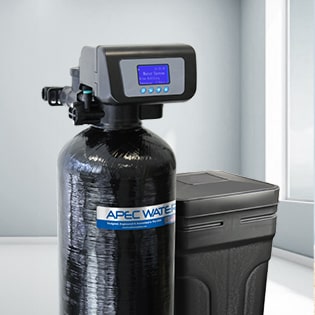Spring is a kind of water resource. It is formed when the side of a hill, a valley bottom, or other excavation intersects a flowing body of groundwater at or below the local water table, below which the subsurface material is saturated with water. Spring is the result of an aquifer being filled to the point that the water overflows onto the land surface. They range in size from intermittent seeps, which flow only after much rain, to huge pools flowing hundreds of millions of gallons daily.

Springs are not limited to the Earth's surface, though. Recently, scientists have discovered hot springs at depths of up to 2.5 kilometers in the oceans, generally along mid-ocean rifts (spreading ridges). The hot water (over 300 degrees Celsius) coming from these springs is also rich in minerals and sulfur, which results in a unique ecosystem where unusual and exotic sea life seems to thrive.
Springs may be formed in any sort of rock. Small ones are found in many places. In Missouri, the largest springs are formed in limestone and dolomite in the karst topography of the Ozarks. Both dolomite and limestone fracture relatively easily. When weak carbonic acid (formed by rainwater percolating through organic matter in the soil) enters these fractures it dissolves bedrock. When it reaches a horizontal crack or a layer of non-dissolving rock such as sandstone or shale, it begins to cut sideways, forming an underground stream.
As the process continues, the water hollows out more rock, eventually admitting airspace, at which point the spring stream can be considered a cave. This process is supposed to take tens to hundreds of thousands of years to complete. The amount of water that flows from springs depends on many factors, including the size of the caverns within the rocks, the water pressure in the aquifer, the size of the spring basin, and the amount of rainfall.
Human activities also can influence the volume of water that discharges from spring-ground-water withdrawals in an area can reduce the pressure in an aquifer, causing water levels in the aquifer system to drop and ultimately decreasing the flow from the spring. Most people probably think of spring as being like a pool of water-and normally that is the case. But springs can occur when geologic, hydrologic, or human forces cut into the underground layers of soil and rock where water is in movement. Water from springs usually is remarkably clear. Water from some springs, however, may be "tea-colored". Its red iron coloring and metals enrichment are caused by groundwater coming in contact with naturally occurring minerals present as a result of ancient volcanic activity in the area.
In Florida, many surface glasses of water contain natural tannic acids from organic material in subsurface rocks, and the color from these streams can appear in springs. If surface water enters the aquifer near a spring, the water can move quickly through the aquifer and discharge at the spring vent. The discharge of highly colored water from springs can indicate that water is flowing quickly through large channels within the aquifer without being filtered through the soil. The quality of the water in the local ground-water system will generally determine the quality of spring water.
The quality of water discharged by springs can vary greatly because of factors such as the quality of the water that recharges the aquifer and the type of rocks with which the groundwater is in contact. The rate of flow and the length of the flow path through the aquifer affect the amount of time the water is in contact with the rock, and thus, the number of minerals that the water can dissolve. The quality of the water also can be affected by the mixing of freshwater with pockets of ancient seawater in the aquifer or with modern seawater along an ocean coast.
So, should you feel confident about whipping out your canteen and filling it with cool and refreshing spring water? No, you should be cautious. The temperature of an Ozark spring comes from its passing through rock at a mean annual temperature of 56 degrees Fahrenheit. The water is crudely filtered in the rock, and the time spent underground allows debris and mud to fall out of suspension. If underground long enough, lack of sunlight causes most algae and water plants to die. However, microbes, viruses, and bacteria do not die just from being underground, nor are any agricultural or industrial pollutants removed.
By the way, spring is defined as a concentrated discharge of groundwater to the surface. Groundwater flows through aquifers (literally, water-bearers) from recharge areas, on uplands, where it is replenished by rainfall and snowmelt to discharge areas, in valleys, where it flows to the surface into streams and rivers, providing them with the dry-weather flow (see diagram above from Driscoll, 1987). When the flow paths are focused on either topographic or geologic factors, groundwater will flow to the surface.
Most springs can be generally classified as gravity springs. The water flowing from the recharge area has energy derived from the higher elevation of that area. This gravitational energy forces the water to move through the sand or rock of the aquifer. Most of the time, the energy is pretty much used up by the time the groundwater discharges to a stream. Most springs are less spectacular than this. They often form where the slope of the land is steeper than the slope of the groundwater-surface (the water table), so that the groundwater reaches the surface and flows out.
A spring develops best when the flow of this discharging water erodes the surface soil, forming a gully or rill, thus creating a low spot where more water can discharge. Such springs often form the headwaters of small streams and are common around the edges of sand plains in southern Maine. The spring may continue to grow as the gully deepens and lengthens back into the slope, capturing more water. Water can also find its way to the surface through natural bedrock fractures, or through a sand layer sandwiched between clay layers.
These more permeable collectors, again, serve to focus the flow of groundwater so that it flows from a small area instead of seeping from the entire hillside. The original Poland Spring was described in 1909: "The water issues from cracks in a dike of porphyry which is about 10 feet wide at the spring and strikes about N 80 degrees W, as nearly as can be estimated" (Clapp and Bayley, 1909). There were many developed springs in the late 1800s and early 1900s.
A 1906 U.S. Geological Survey census showed 44 commercial springs in southern Maine alone. Public water supplies were often from rivers and lakes (108 of 149), but many (29) communities used springs as their source of supply. Only a few springs still supply water to municipal supplies. Commercial springs often bottled water for the local market. Bottles of spring water were hauled by wagon from the spring, where they had been filled, to town, and delivered to customers.



